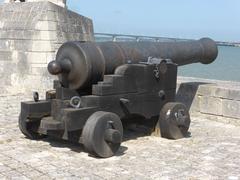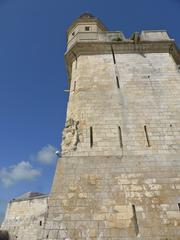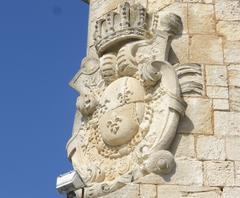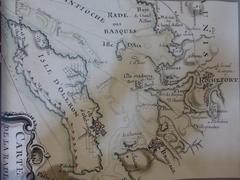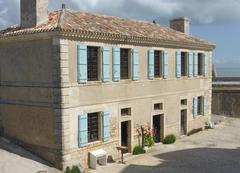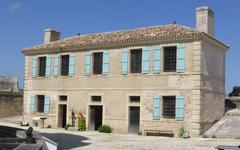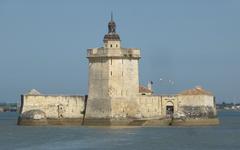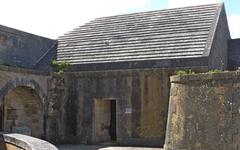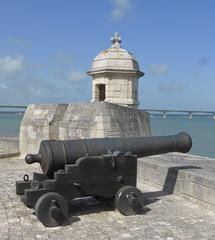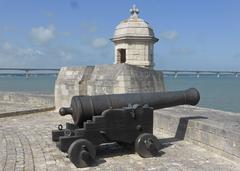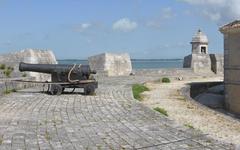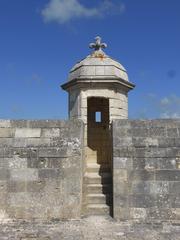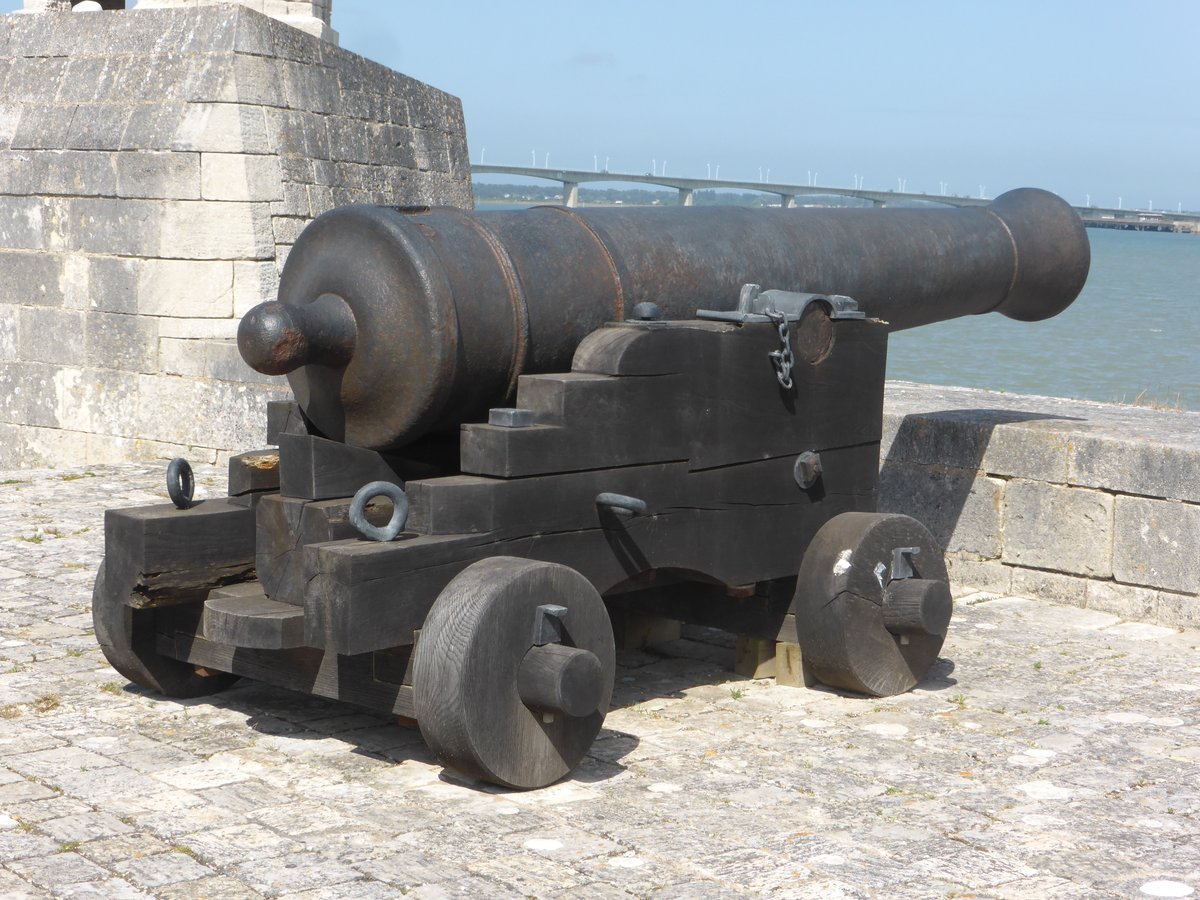
Fort Louvois Visiting Information and Tips - Marennes, France
Date: 23/07/2024
Introduction
Fort Louvois, also known as Fort Chapus, is a remarkable example of 17th-century military architecture located between the Île d’Oléron and the mainland of France. Commissioned by Louis XIV and designed by the legendary military engineer Vauban, this fortification stands as a testament to France’s rich maritime heritage. Positioned strategically on the Chapus islet, Fort Louvois was constructed between 1691 and 1694 to protect the vital maritime passage and the Rochefort Arsenal. Its unique architectural features, including a central tower, a semi-circular battery, and a causeway that is submerged at high tide, make it a fascinating destination for history enthusiasts and architecture aficionados alike. Whether you are interested in exploring its historical exhibits or simply enjoying the stunning views of the surrounding coastline, a visit to Fort Louvois promises a memorable experience (Fort Louvois Official Site).
Table of Contents
- Introduction
- Historical Background
- Visitor Information
- Modern-Day Significance
- Conclusion
- FAQ
- References
Historical Background
Construction and Strategic Importance
Constructed between 1691 and 1694, Fort Louvois was commissioned by Louis XIV and designed by the renowned military engineer Sébastien Le Prestre de Vauban. The primary purpose of Fort Louvois was to protect the strategic maritime passage between the Île d’Oléron and the mainland, particularly the Rochefort Arsenal, a crucial naval base for the French fleet (Fort Louvois Official Site).
The fort’s location on the Chapus islet, approximately 400 meters from the mainland, was chosen for its strategic vantage point. This positioning allowed the fort to control and defend access to the Charente River, which was vital for the defense of Rochefort. The fort’s design includes a central tower surrounded by a semi-circular battery, which could house up to 18 cannons, maximizing its defensive capabilities against potential naval attacks.
Architectural Features
Fort Louvois is a quintessential example of Vauban’s military architectural style, characterized by its robust and functional design. The central tower, known as the keep, stands at 20 meters high and served as the main defensive structure. The keep is surrounded by a lower battery, which provided additional firepower and protection. The fort also includes a barracks, a powder magazine, and a cistern, ensuring that it could sustain a prolonged siege if necessary (Fort Louvois History).
One of the most distinctive features of Fort Louvois is its causeway, which connects the fort to the mainland. This causeway is submerged at high tide, making the fort accessible only by boat during certain times of the day. This unique feature added an extra layer of defense, as it made the fort more difficult to access for potential attackers.
Role in Historical Conflicts
Throughout its history, Fort Louvois played a significant role in various military conflicts. During the War of the Spanish Succession (1701-1714), the fort was instrumental in protecting the French coast from British naval forces. The fort’s strategic location allowed it to control the passage of ships and prevent enemy forces from accessing the Rochefort Arsenal.
In the 19th century, Fort Louvois continued to serve as a defensive stronghold. During the Napoleonic Wars, the fort was reinforced and modernized to accommodate new artillery and defensive techniques. Despite these upgrades, the fort saw limited action during this period, as the primary focus of naval warfare shifted to other regions.
Decline and Restoration
By the late 19th century, advancements in military technology rendered Fort Louvois obsolete. The fort was decommissioned and fell into disrepair. However, its historical significance and architectural beauty did not go unnoticed. In the early 20th century, efforts were made to preserve and restore the fort. In 1929, Fort Louvois was classified as a historical monument by the French government, ensuring its protection and preservation for future generations (French Ministry of Culture).
Restoration efforts continued throughout the 20th century, with significant work being done to repair the fort’s structure and restore its original features. Today, Fort Louvois stands as a testament to the ingenuity and skill of Vauban’s military engineering, as well as a symbol of France’s rich maritime history.
Visitor Information
Fort Louvois Visiting Hours and Tickets
Fort Louvois is typically open to visitors from April to November, with specific opening hours varying by season. During peak season (July and August), the fort is usually open from 10 AM to 7 PM. In the shoulder seasons (April-June and September-November), hours are generally from 10 AM to 6 PM. It’s always a good idea to check the official Fort Louvois website for the most up-to-date visiting hours (Fort Louvois Tickets).
Ticket prices are quite reasonable, with discounts available for children, students, and seniors. As of the latest update, adult tickets are priced at €8, children (ages 5-12) at €5, and children under 5 are free. Family packages and group discounts are also available.
Travel Tips
To get to Fort Louvois, you can drive to Bourcefranc-le-Chapus, where parking is available near the causeway. From there, you can walk the causeway during low tide or take a boat during high tide. Make sure to check the tide schedules to plan your visit accordingly. Comfortable walking shoes are recommended, as the causeway can be slippery when wet.
Nearby Attractions
The region around Fort Louvois offers many other attractions worth exploring. The Île d’Oléron is just a short drive away and is known for its beautiful beaches, charming villages, and delicious seafood. The Rochefort Arsenal and the Corderie Royale are also nearby, offering further insights into France’s naval history.
Accessibility
While the fort itself has some uneven surfaces and stairs that may be challenging for visitors with mobility issues, efforts have been made to improve accessibility. There are ramps and accessible pathways in certain areas, and the visitor center provides detailed information on accessible routes.
Special Events
Fort Louvois hosts various events throughout the year, including historical reenactments, exhibitions, and educational programs. These events offer a unique opportunity to experience the fort’s history in a dynamic and engaging way. Check the official website for a calendar of upcoming events (Fort Louvois Events).
Guided Tours and Photographic Spots
Guided tours are available and highly recommended for those who want to gain a deeper understanding of the fort’s history and architecture. These tours are led by knowledgeable guides who provide fascinating insights and anecdotes about Fort Louvois. Additionally, the fort offers numerous picturesque spots perfect for photography, particularly during sunrise or sunset when the lighting enhances the fort’s dramatic silhouette against the sea.
Modern-Day Significance
In the present day, Fort Louvois serves as a popular tourist attraction and a cultural landmark. Visitors can explore the fort’s various structures, including the keep, the battery, and the barracks. The fort also houses a museum that provides detailed information about its history, construction, and role in various military conflicts. Interactive exhibits and guided tours offer visitors a comprehensive understanding of the fort’s historical significance (Fort Louvois Visitor Information).
The fort’s unique location and architectural features make it a fascinating destination for history enthusiasts and architecture aficionados alike. The causeway, which is accessible only during low tide, adds an element of adventure to the visit, as visitors must time their trip carefully to ensure they can access the fort.
In addition to its historical and architectural significance, Fort Louvois also plays a role in local cultural events. The fort hosts various exhibitions, reenactments, and educational programs throughout the year, providing visitors with a deeper appreciation of its historical context and cultural importance.
Conclusion
Fort Louvois remains a remarkable historical site, exemplifying the strategic ingenuity of Vauban’s military engineering. The fort’s rich history, unique architectural features, and ongoing preservation efforts make it a must-visit destination for those interested in France’s maritime heritage. Visitors can explore the fort’s various structures, participate in guided tours, and enjoy special events that bring its history to life. The surrounding region offers additional attractions, such as the Île d’Oléron and the Rochefort Arsenal, providing a well-rounded and enriching travel experience. By planning your visit carefully, checking the tide schedules, and taking advantage of the available amenities and activities, you can fully immerse yourself in the fascinating history of Fort Louvois (Fort Louvois Visitor Information).
FAQ
Q: What are Fort Louvois’s opening hours?
A: Fort Louvois is open from April to November, with hours varying by season. During peak season, it’s open from 10 AM to 7 PM, and during the shoulder seasons, from 10 AM to 6 PM.
Q: How much do tickets cost?
A: Adult tickets are €8, children (ages 5-12) are €5, and children under 5 are free. Family packages and group discounts are also available.
Q: How can I get to Fort Louvois?
A: You can drive to Bourcefranc-le-Chapus and park near the causeway. You can walk the causeway during low tide or take a boat during high tide.
Q: Are there guided tours available?
A: Yes, guided tours are available and highly recommended for a deeper understanding of the fort’s history and architecture.
Q: Is Fort Louvois accessible for visitors with mobility issues?
A: While there are some uneven surfaces and stairs, ramps and accessible pathways are available in certain areas. The visitor center provides detailed information on accessible routes.
